It’s the 2nd December 2013 and I find myself in one of those rare occasions in life where I feel I need to pinch myself to see if I’m dreaming. Why? Somehow I’m in control of a British Antarctic Survey De Havilland Twin Otter aircraft flying over the white featureless expanse of the West Antarctic Ice Sheet. I’m part of a team of 12 heading to Pine Island Glacier, a remote ice stream 75°S and around 1500 km from Rothera Research Station on the Antarctic Peninsula.
The journey so far has taken four flights from London to Punta Arenas on the Southern tip of Chile and across the Drake Passage to Earth’s southernmost continent. Our pilot, John is having some lunch and keeping a close eye on my erratic attempts to hold a constant bearing and altitude as I ‘co-pilot’ the final leg of our journey. On the horizon I spot a thin strip of bright white snow that marks the groomed ski-way of our landing site.
John takes back the controls and eases the throttle down for a perfectly smooth landing. I step down from the plane with a familiar squeak and crunch of cold dry snow underfoot in an unfamiliar environment like nothing I’ve experienced before. I squint as my eyes adjust to the bright white desert of flat ice sharply contrasted by a crystal clear blue sky spanning the distant horizon in every direction. This will be my home for the next few months as I embark on my first Antarctic field season as part of the first iSTAR science traverse of Pine Island Glacier.
The iSTAR research programme
iSTAR (ice sheet stability and research programme) is a £7.4 million research programme funded by the UK Natural Environment Research Council (NERC) involving 11 UK universities and the British Antarctic Survey (BAS). Its aim is to improve understanding of ice-ocean interaction and ice dynamic response of Amundsen Sea sector of the West Antarctic.
Over the past few decades this region has been undergoing the greatest rates of ice loss on the planet causing concern over its potential future contribution to rising global sea-level. Pine Island Glacier (PIG) drains around 10% of the West Antarctic Ice sheet (WAIS) which contains enough ice if melted to raise global sea-level by approximately 3.3 metres.
In order to make accurate predictions about how this region will respond to environmental change requires good physical observations and measurements. Through scientific ocean cruises and an over-ice traverse spanning two field seasons combined with satellite remote sensing and numerical modelling, iSTAR aims to provide the data necessary to improve the accuracy of projections for the contribution of the WAIS to future sea level.
The iSTAR traverse of Pine Island Glacier
Traditionally the UK has conducted glaciological investigations in remote regions of Antarctica using small field units typically consisting of one scientist and a field assistant. For larger drilling projects equipment has to be flown by aircraft at great expense and fuel consumption.
For iSTAR, a new approach was undertaken using two ‘tractor trains’. These consist of two Pisten Bully snow tractors towing two long poly sleds with fuel bladders and three metal cargo sledges including a living ‘caboose’; a converted shipping container with a cooking and living space (essentially a caravan fit for polar travel!). All this equipment was delivered by the RRS Ernest Shackleton to the Abbot Ice Shelf in February 2012 and driven to Pine Island Glacier ready for the first traverse the following season.
This infrastructure provided a means to meet the ambitious science aims of the iSTAR traverse making it possible to collect more ground measurements over a wider area than ever previously possible and with greater fuel efficiency.
The traverse follows a 900 km route visiting the trunks and tributaries of PIG to conduct a range of measurements on the ice.
So what about the science?
iSTAR science
The iSTAR programme is split into four science projects, with iSTAR A and B making measurements from scientific ships and iSTAR C and D collecting data during the overland traverse of Pine Island Glacier. It is the overland traverse that we were involved in.
iSTAR C: Dynamic Ice project:
This project aims to understand the internal dynamic processes responsible for transmitting the effect of thinning of PIG’s floating ice shelf caused by melting of warm ocean currents upstream into the trunk and tributaries of the ice stream. Of particular interest is how the underlying geology of the ice influences its flow.
Over the course of two field seasons the traverse collected over 2000 km of radar data and over 40 km of seismic surveys were completed. The team used skidoos to tow radar equipment across the ice making the most of the 24 hours of daylight of the Antarctic Summer to provide detailed images of the ice thickness and bed topography. The geology of the subsurface was also investigated by analysing the seismic energy returned from small explosive charges buried in the surface of the ice.

Operating the ice penetrating radar (left) and firing explosives for seismic surveys (right) (credit: Damon Davies).
iSTAR D: Ice Loss project
Satellite measurements over the past two decades have revealed rapid thinning (up to 1.5 metres per year) and acceleration of PIG’s ice flow. The iSTAR D project aims to take measurements to extend the record of past snow accumulation and ice density to improve estimates of ice loss that cannot be determined from satellite measurements.
To determine past accumulation and understand surface processes such as snow density changes and compaction, we drilled 10 shallow (50 metre) ice cores. These ice cores had to be kept frozen and shipped back to the UK where their chemistry is being analysed to enable us to quantify how much snow has fallen onto the ice sheet in the past. Over 20 snow density profiles were recorded using a device called a ‘Neutron Probe’ which uses a radioactive source to measure neutron scattering from within the snowpack to calculate ice density. This might sound dangerous but to my disappointment after spending many hours operating this equipment I have yet to develop super powers!
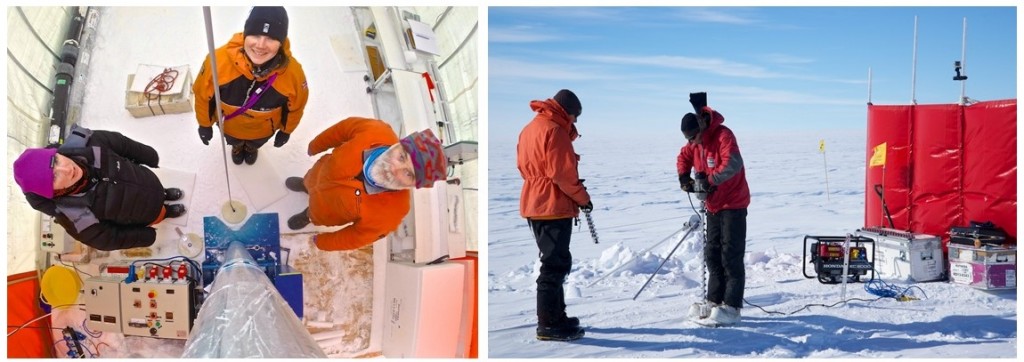
Rob, Becky and Emma inside the ice core drilling tent (left), Damon and Andy working at a Neutron Probe site (right) (credit: Alex Taylor).
Surface radars operating at the same frequency as satellites that orbit the earth measuring ice surface changes were also deployed. These ground radar measurements enable us to improve the accuracy of satellite derived estimations of ice volume loss from West Antarctica.
Now you know all about iSTAR science but what’s it like to live and work in one of the most remote regions of the coldest, highest, driest and windiest continent on Earth?
Life in the field
Life on the iSTAR traverse is perhaps similar to a travelling circus, only instead of jugglers and gymnasts we have scientists and mechanics and rather than a ‘Big Top’ we had the ice core drilling tent. At each of the 22 sites on the traverse route the circus would set up camp for a few days to a week. Tents would be pitched, sledges un-hitched and science equipment unloaded, the whole process of setting up camp taking just an hour or two.
This region of Antarctica has a reputation for wild weather. Temperatures can drop below -30°C and winds can reach hurricane speeds reducing visibility to within a few metres. However, on calm days it can be so silent you can hear your own heartbeat and the strength of the summer sun provides welcome warmth. Good weather means working long hours as you never know how long it might last. When the weather takes a turn for the worse, all you can do is shelter from the elements and wait patiently for the storm to pass, though patience can be tested when the storm lasts for a week!
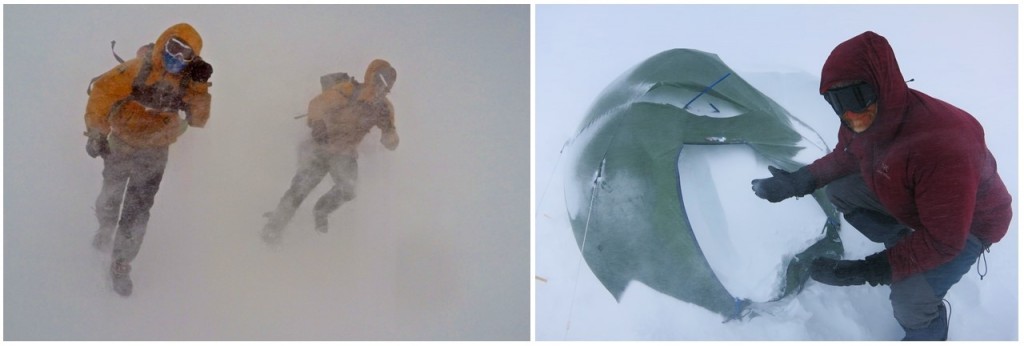
iSTAR team members battling a storm (left) (credit: Alex Taylor). Tent damage after a big storm (right) (credit: Damon Davies).
The living ‘caboose’ offers a warm shelter away from the elements. This is also where the team gathers at meal times with everyone taking turns to cook for the rest of the group. The iSTAR menu normally consists of a porridge breakfast, soup and bread for lunch, some form of carbohydrate with meat slop for dinner followed by tinned fruit/pudding with powdered custard for dessert. The labels of some meal packages such as ‘chicken own juice’ and ‘sausages in lard’ aren’t particularly enticing but generally the food is good by Antarctic field standards.
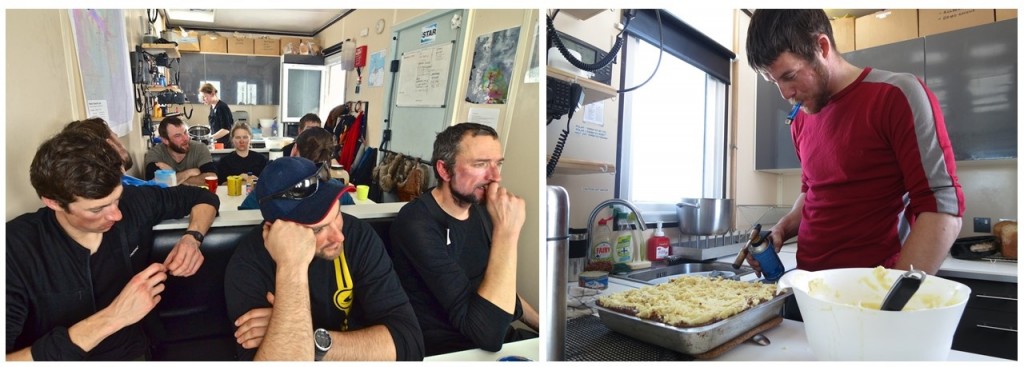
Dinner-time in the caboose (left) (credit: Alex Taylor). James finishing off a cottage pie with a blow torch (right) (credit: Damon Davies).
The iSTAR traverse was an incredible experience that allowed me to learn a range of data acquisition techniques as well as learning how to work in the often hostile Antarctic weather. I was one of 9 PhD students and post-doctoral researchers involved in the traverse seasons who were able to work alongside highly experienced scientists in the field. Our success is a testament to the hard work and good spirit of everyone involved.
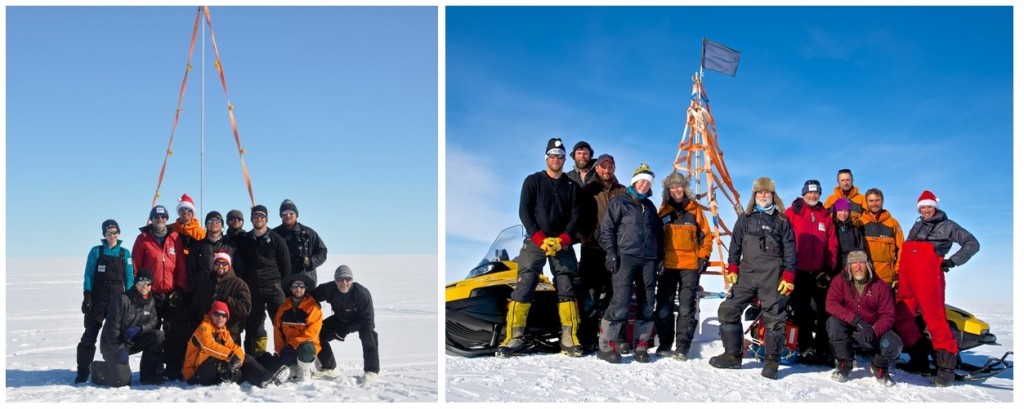
Left photo, 2013/14 traverse participants. Left to right, Anna Hogg (Leeds), Rob Bingham (Edinburgh), Andy Smith (BAS), Damon Davies (Edinburgh), Johnny Yates (back row, BAS), Tim Gee (middle, BAS), Jan De Rydt (front, BAS), Steph Cornford (Bristol), James Wake (BAS), Peter Lambert (Reading), Thomas Flament (front, Leeds), David Vaughan (BAS) (credit: David Vaughan). Right photo, 2014/15 traverse participants. Left to Right, James Wake (BAS), Mark Baird (BAS), Tim Gee (BAS), Emma Smith (BAS), Isabelle Nias (Bristol), Robert Mulvaney (BAS), Andy Smith (BAS), Alex Brisbourne (back row, BAS), Rebecca Tuckwell (middle, BAS), Alex Taylor (front, BAS), Sebastian Rosier (BAS), Damon Davies (Edinburgh) (credit: Alex Taylor).
For more information about the iSTAR research programme visit www.istar.ac.uk and the ‘stories from the field’ blog posts to read more tales from traverse fieldwork.
Acknowledgments: A huge thanks to James Wake, Tim Gee, Johnny Yates, Mark Baird and Alex Taylor for their tireless support in the field. The traverse could not have succeeded without support from the staff at Rothera Research Station. Also thanks to Emma Smith for helpful comments on this blog.
Edited by Sophie Berger
Damon Davies is a PhD researcher at the University of Edinburgh, School of Geosciences Glaciology and Cryosphere research group. His research uses geophysics to investigate the dynamics of ice stream beds and their control on ice stream flow.


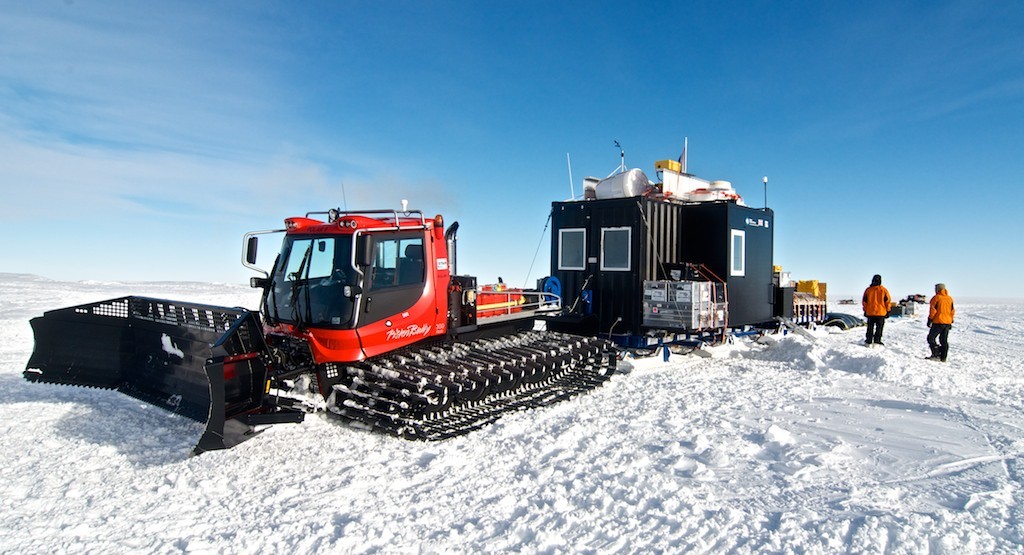
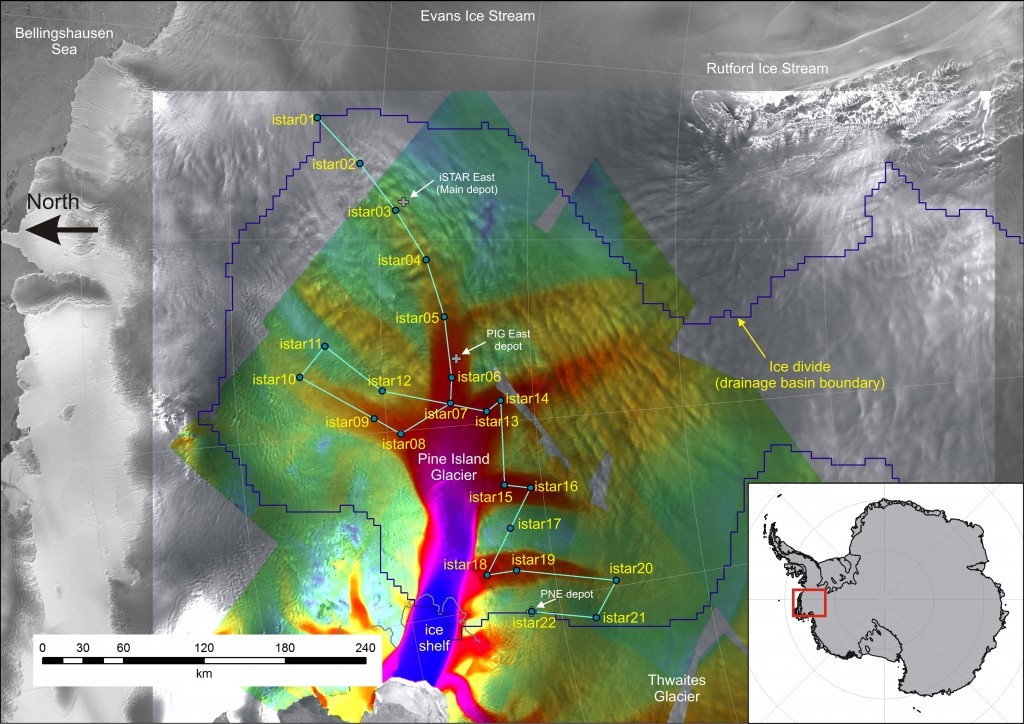
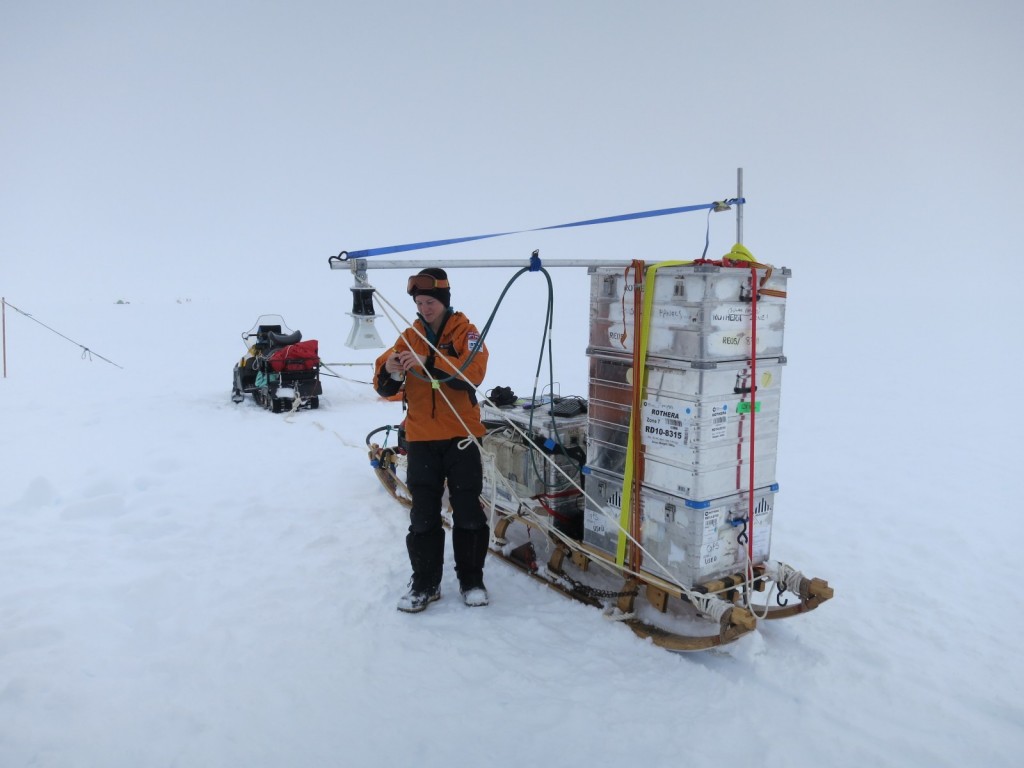


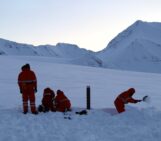
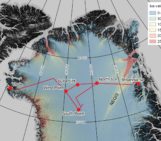
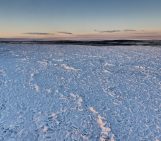
Pingback: Cryospheric Sciences | Women of Cryo I: Dr Emma Smith